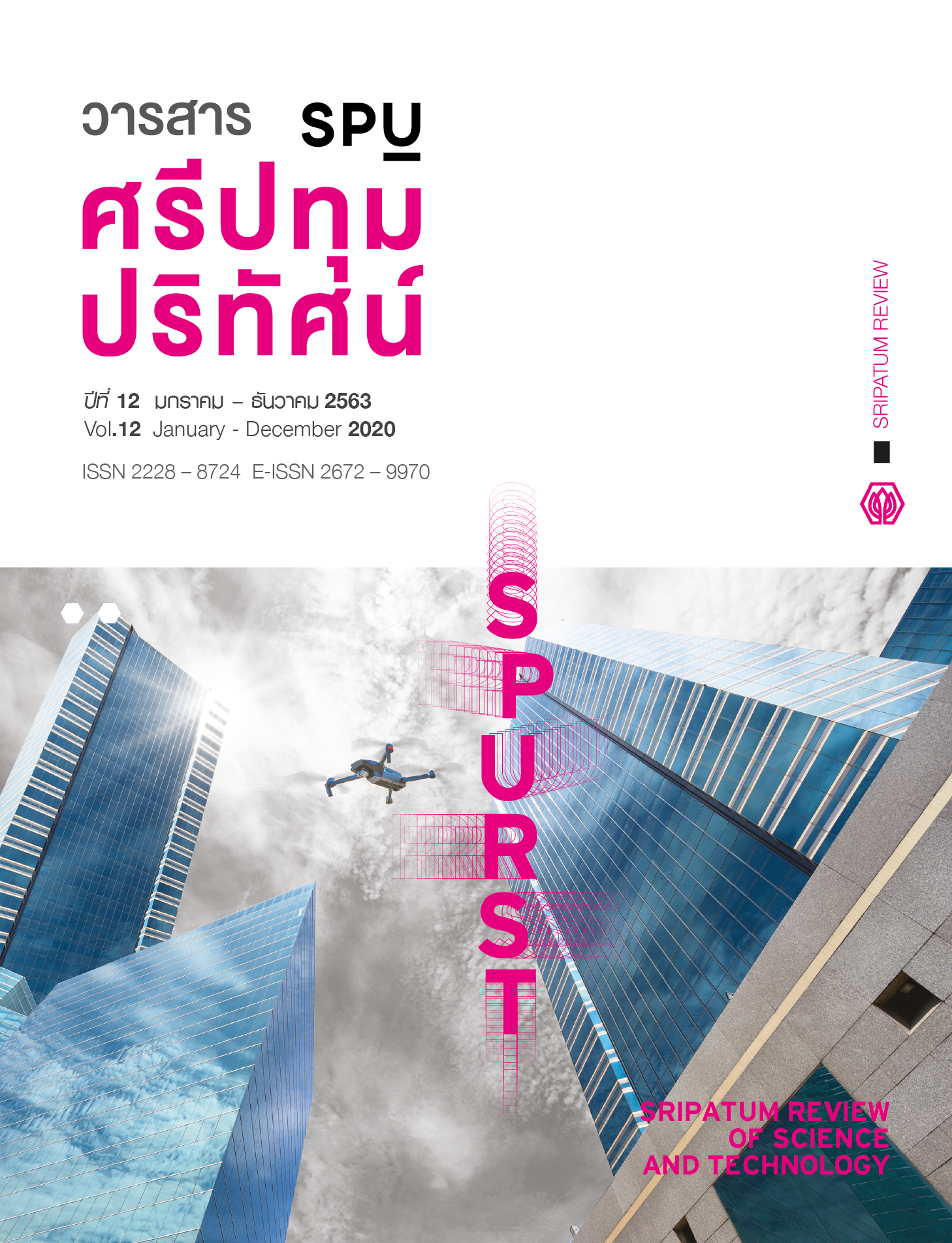The The Analysis to Determine Appropriate Number of Labors by Industrial Engineering Tools in Laminate Glass Production Process
Main Article Content
Abstract
This research is to study laminate glass production process with the emphasis on the analysis to determine appropriate number of labors. The objectives of this research are to increase labor productivity and overall labor efficiency, and to reduce labor cost. The research process started with studying the production process and number of labors in the current situation in order to find the standard time and the production cycle of the process leading to the calculation of labor productivity, the overall labor efficiency and the labor cost before process improvement. Then, industrial engineering tools, namely, the multiple activity chart and Yamuzumi Chart, were used for considering work load of each employee, resulting in reducing the number of labors. From the work performance process analysis, it was found that the proper number of labors in the First Load and the Splice Room were 2 and 3 persons, respectively. The number of labors was therefore decreased to 7 from 11 persons in aggregate. The study result shows that the labor productivity and the overall labor efficiency increase 57.14 percent and 17.01 percent, respectively, and the labor cost in the laminate glass production process decreases by 581,250 baht per year.
Article Details
References
Athikulrat, K. (2017). Productivity Improvement by Fundamental of Hand Motions: A Case Study of Assembly Line in an Electronics Company. RMUTP Research Journal, 11(1), 165-176. (in Thai)
Cheewaworanontree, W., Rontlaong, P. and Boonrak, N. (2018). Motion and Time Study: A Case Study on A Short-Time Hydrostatic Failure Pressure Testing Process of Rigid PVC. The Journal of Industrial Technology Suan Sunandha Rajabhat Univeristy, 6(1), 26-38.
Fiallo, C. M. and Howell, G. (2012). Using Production System Design and Takt Time to Improve Project Performance. The Proceedings of 20th Conference of the International Group for Lean Construction 2012.
Kanjanapanyakom, R. (2009). Industrial Work Study. Bangkok: Top Publishing. (in Thai)
Lalitaporn, P. (2013). Production Planning and Control. Bangkok: SE-ED. (in Thai)
Phannikul, T. Sangkamanee, D. and Ngamsanga, P. (2014). Efficiency Improvement in
Manufacturing Process by Industrial Engineering Tools Case Study: Bicycle Assembly Factory. The Proceedings of Industrial Engineering Network Conference 2014, 30-31 October 2014 at Novotel Hotel Samutprakarn. (in Thai)
Poonikom, K. (2017). Efficiency Improvement in Manufacturing Process by Improvement
Technique Case Study: Drinking Water Bai-Pai-Keaw. The Proceedings of Industrial Engineering Network Conference 2017, 12-15 July 2017 at The Empress Hotel Chiangmai, 150-155. (in Thai)
Saranpracha, S. (2013). Capacity Improvement of Car-Seat Part Production Line with Toyota
Production System Concept. Engineering Journal, 5 (1), 11 – 27. (in Thai)
Sirisomphol, S. (2011). Standard Operators for Assembly Process Case Study: Assembly
Production Line Electronics Part Factory: Flexible Print Circuit. An Independent Study
of the Degree of Master of Engineering in Industrial Development. Bangkok: Thammasat University. (in Thai)
Sriwarom, T., Counaphonwiwat, T. and Manisri, C. (2014). Productivity Improvement for Dishwashing Liquid Product by Quality Function Deployment and Value Engineering. Sripatum Review of Science and Technology, 6, 57 – 67.
Sriyom, K., Chantawee, P. and Petcharat, S. (2018). The Reduction in the Loss of Rubber Latex Process by Flow Process Chart. The Journal of Industrial Technology Suan Sunandha Rajabhat Univeristy, 6(2), 13 – 23. (in Thai)
Veerasuksawad, V. Silsong, S. Khongthanasub, P. and Soontravanich, C. (2012). An Improvement of the Efficiency of Toner Cartridge Packing Process. The Proceedings of Industrial Engineering Network Conference 2012, 17-19 December 2012 at Methavalai Hotel Chaam Phetchaburi, 201 – 206. (in Thai)
Moungmoon, K., Kartea, N. and Chaikumpun, M. (2016). The Standard Time Study of Carton Corrugated Productions: Case Study Ruengchana Packing Limited Partnership. Kasem Bundit Engineering Journal, 6(1), 107 – 121.


